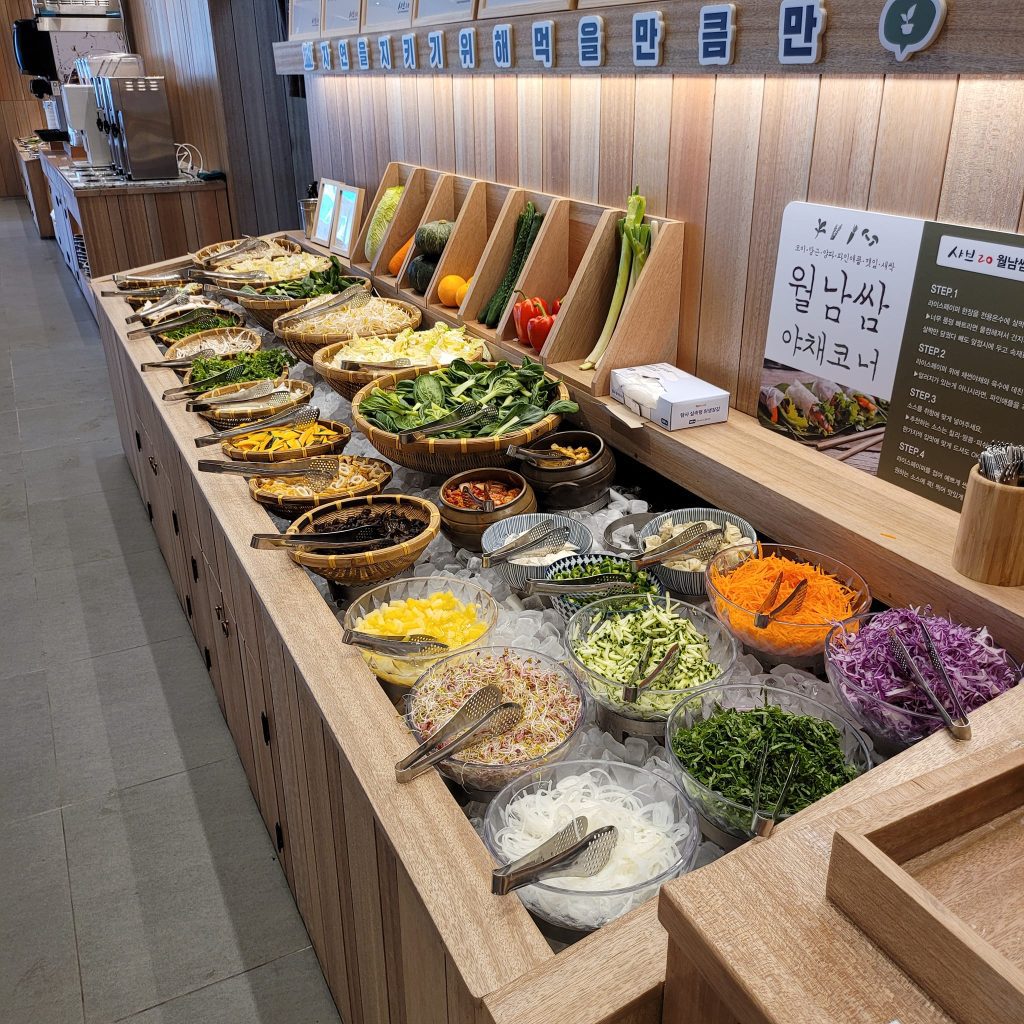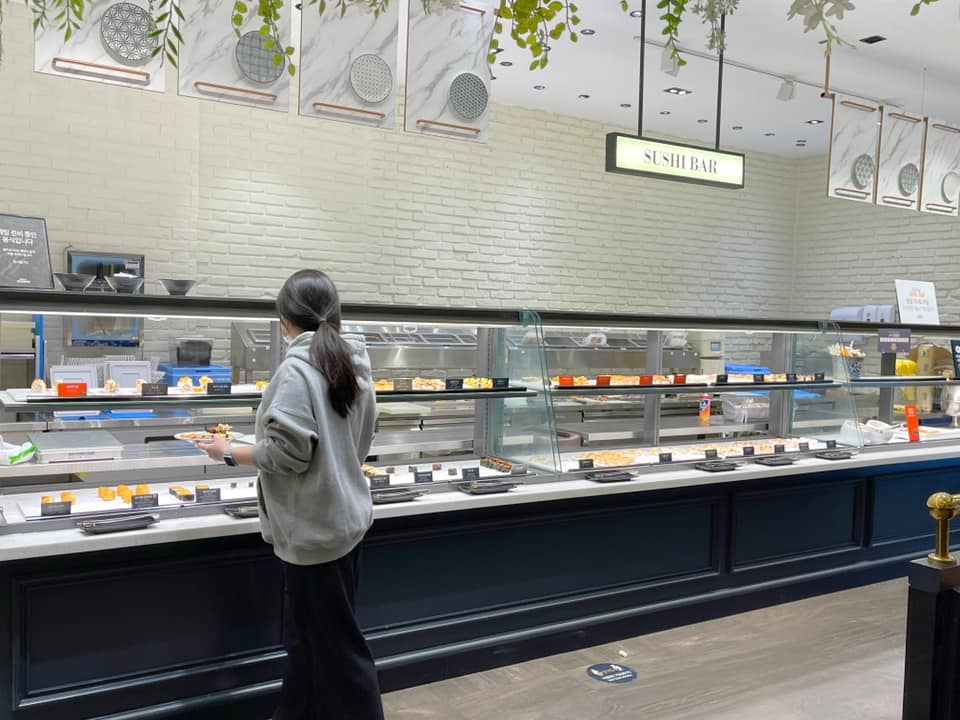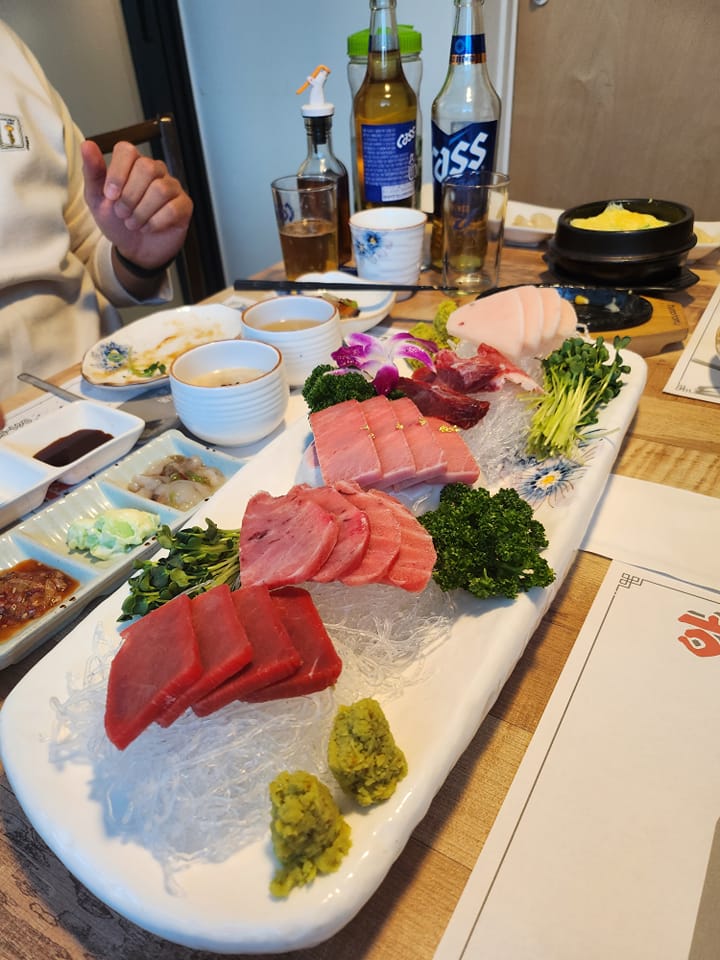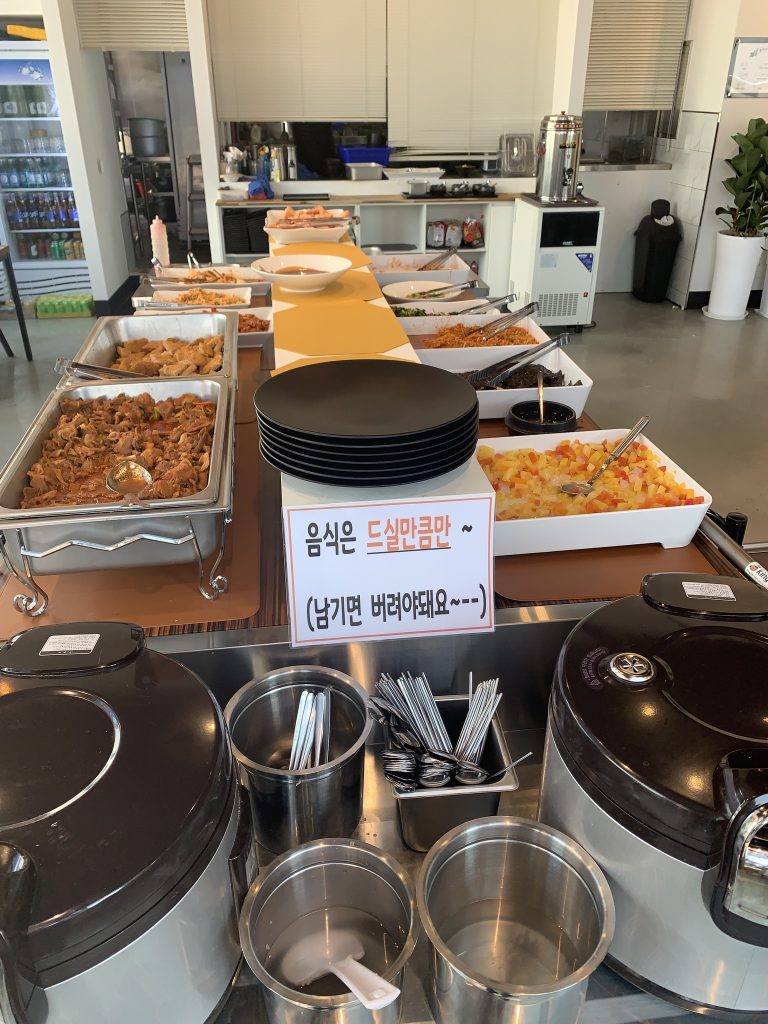
History and Safety of Food Buffets in South Korea
If you live or travel in South Korea, you need to try the different types of buffets across the country. Here is a little about the history and safety of food buffets in Korea. This is for folks who LIVE in Korea and want to expand their lives past what is promoted for tourists on social media.
From Hotel Luxury to “무한리필” Culture
South Korea has both Western-style buffets and their own versions like 무한리필 or 한식부페. Looks look at the history of how these restaurant styles developed over time:
| Era | Milestone | What Changed & Why |
|---|---|---|
| 1960s-1980s | First hotel spreads: Seoul’s Chosun Hotel and later Walkerhill rolled out Western-style “all-you-can-eat” lunch rooms to impress foreign diplomats and airline crews. | Buffets were premium events, priced well above an average salary. |
| 1990s | Family-restaurant boom : Imported chains like Sizzler and home-grown VIPS (launched 1997) paired steak with a salad-bar buffet, introducing the concept to middle-class families and company gatherings. | Economic growth + company 회식 culture made the fixed-price model attractive. |
| Early-2000s | Local brands diversify – Ashley (2003) repackaged the salad bar for budget diners, while seafood giant Todai entered Korea. Hansik buffets let office workers pile banchan for ₩6-8k. | Consumers wanted variety and “value for money” after the 1997 IMF crisis. |
| Late-2000s–2010s | 무한리필 (unlimited-refill) explosion – Small BBQ and shabu-shabu shops adopted self-service stations; blogs dubbed it “eat as much as you grill.” | Rising meat prices + social media hype created a race to bigger spreads. |
| 2014-2019 | Niche buffets – Dookki (tteokbokki, 2014) spread to 200+ outlets; dessert, vegan and temple-food buffets filled new diet niches. | Younger diners sought Instagrammable, theme-driven experiences. |
| 2018 | Leftover-reuse scandal – A Todai branch was caught turning untouched sushi back into rolls. MFDS quickly banned re-serving most displayed items. | Sparked tougher inspections and customer awareness. |
| 2020-2022 | Pandemic pause & pivot – KDCA/MFDS guidelines required masks, disposable gloves, plexiglass and staff-served stations; many buffets switched to plated service before returning to self-service in 2023. | |
| 2023-present | Digital & premium comeback – Chains like Ashley Queens reopened with QR-code reservations, while five-star hotels added chef-manned stations and local-produce corners. Expansion plans (e.g., Ashley to 150 stores, 2025) show renewed demand. |
Shabu-Shabu Buffets Particularly Popular
You may find shabu-shabu buffets especially popular. It may even feel hard to find other options in your area. Here is the history of this style:

| Phase | Key proof points | Why it matters |
|---|---|---|
| 2003 – 2008 “first wave” | Launch of Chaesundang in 2003 → 50 outlets by 2005, 100 by 2008 | The chain’s rapid rollout made hot-pot + DIY salad bars a familiar, mid-priced alternative to hotel buffets. |
| 2010 – 2014 “salad-bar boom” | New players such as 꽃마름 (founded 2010, 100+ stores by 2019) and Chaesundang PLUS (launched Apr 2013; 50 stores in its first year) | Two trends converged: “well-being” dining and the all-you-can-eat (무한리필) craze, pulling in family and office-outing crowds. |
| mid-2010s → pre-COVID | Copy-cat brands—마루샤브, 샤브애, 샤브리안—expanded nationwide, packing unlimited noodles, 월남쌈 wraps and soft-serve into ₩13k–₩19k price points. | Competition cemented the category as a weekday-lunch staple rather than a splurge. |
| 2023 – present “premium comeback” | Shabu All Day rolled out a hotel-style buffet concept in 2023; it already operates about 140 locations and is targeting 250 by 2025 | Post-pandemic diners chasing value and variety under high inflation have reignited interest, while Instagram-ready dessert bars keep younger crowds engaged. |
So, when did they become mainstream?
- Mid-2000s: Chaesundang’s 50-store milestone in 2005 marks the first moment shabu-shabu buffets were visible in every major city.
- Early 2010s: The category truly exploded—multiple new franchises, nationwide TV ads, and blogger “무한리필 투어” posts turned hot-pot buffets into a go-to family and 회식 option. Numbers like Chaesundang PLUS’s 50 stores in 12 months (2013-14) show peak take-off.
In other words, the idea for Shabu-shabu buffest was planted in 2003, but the buffet format crossed over from “novel” to “popular” roughly 2010 – 2013, and it’s now enjoying a second growth spurt with premium concepts in the mid-2020s.
How Safe Are Buffets in South Korea?
Regulatory backbone
- All buffets operate under the Food Sanitation Act; MFDS’s 2023 Food-Safety Management Guidelines mandate hot dishes be held above 60 °C and cold items below 4 °C, with hourly log sheets.
- After the 2018 incident, MFDS clarified that reusing displayed food is illegal, except raw veggies or unpeeled fruit that can be washed again.

Hygiene-rating system (식품위생등급제)
Since May 2017, restaurants—including buffets—can apply for ★ to ★★★ grades. A ★★★ “매우 우수” plate on the door means the venue scored 90 + /100 on surprise audits; Shilla Stay’s buffet is a recent example.

Inspection & enforcement
Local health offices conduct at least one unannounced check per year; failures trigger fines or suspension. High-profile crackdowns after food-poisoning clusters keep operators on alert (e.g., 130 cases at a kimbap buffet in July 2025). Keep in mind, this does not mean kimbab is dangerous, it was an isolated incident. All countries experience incidents of food born illness.
COVID-era safeguards that stuck
Disposable gloves, single-use tongs and floor arrows are no longer mandated nationwide, but many buffets kept them because guests said they felt cleaner—MFDS’s 2021 White Paper lists them as “recommended best practice.” Read the paper in English. We uploaded it below:
Waste & environmental controls
Buffets pay hefty fees for food-waste pickup under Korea’s RFID bin system, so most impose a ₩2-3k penalty for excessive leftovers and post “Take only what you eat” signs—another indirect safety measure because high turnover means fresher trays.
Safety Checklist for Diners
If you have a phobia of eating in other countries than your own, consider the following ways you can accommodate your worries and concerns while living in South Korea:
- Look for the Grade Plate – Aim for ★★ or ★★★ venues.
- Watch the Thermometers – Good buffets display digital read-outs on ice beds and bain-maries.
- Check Turnover Pace – Popular lunch hours = faster tray swaps = lower bacterial growth.
- Glove & Tong Etiquette – Use the disposable gloves/tongs each time; it’s not just courtesy, it’s code.
- Allergy Labels – MFDS requires the 21 major allergens to be posted in writing or pictograms—ask staff if you don’t see them.
- Stay Alert to Notices – If an outlet recently failed inspection, local governments post it online for 3 months.

Searching for Buffets in South Korea
First of all, GET OFF GOOGLE! You need to be searching on Naver Maps or Kakao Maps to find the best buffets across South Korea. When you use Naver Maps, you also need to search in Hangul and not in English or using Romanized Hangul.
Below is a handy cheat-sheet of Hangul keywords (with simple romanization for understanding but NOT searching) you can paste into Naver Maps, Kakao Map, or a regular web search to track down every major buffet style in Korea. Add your city name (e.g., 부산, Busan), 근처 (“near me”), or 맛집 (“good places”) to refine results.
| Buffet style | Core search phrase(s) | Handy variants / add-ons |
|---|---|---|
| Luxury hotel buffet | 호텔뷔페 (hotel-bwi-pe) | 조식뷔페 (breakfast buffet), 파크뷰 뷔페 (Parkview buffet) |
| General family buffet / salad bar | 샐러드바 (sae-lleo-deu-ba) | 패밀리레스토랑 뷔페, 애슐리 뷔페, 빕스 뷔페 |
| Sushi & seafood buffet | 초밥뷔페 (cho-bap-bwi-pe) | 스시뷔페, 씨푸드뷔페, 해산물 무한리필 |
| Shabu-shabu & hot-pot buffet | 샤브샤브뷔페 (sya-beu-sya-beu-bwi-pe) | 샤브무한리필, 훠궈 뷔페, 월남쌈 샐러드바 |
| Korean BBQ / meat buffet | 고기무한리필 (go-gi-mu-han-ri-pil) | 고기뷔페, 삼겹살 무한리필, 숯불구이 뷔페 |
| Hansik (home-style Korean) buffet | 한식뷔페 (han-sik-bwi-pe) | 백반뷔페, 점심뷔페, 반찬 무한리필 |
| Tteokbokki buffet | 떡볶이뷔페 (tteok-bok-kki-bwi-pe) | 즉석떡볶이 무한리필, 두끼 뷔페 |
| Chicken buffet | 치킨무한리필 (chi-kin-mu-han-ri-pil) | 치킨뷔페, 프라이드치킨 뷔페 |
| Pizza buffet | 피자뷔페 (pi-ja-bwi-pe) | 피자무한리필, 피자몰 |
| Dessert / fruit buffet | 디저트뷔페 (di-jeo-teu-bwi-pe) | 케이크뷔페, 딸기뷔페, 애프터눈티 뷔페 |
| Vegan / temple-food buffet | 채식뷔페 (chae-sik-bwi-pe) | 비건뷔페, 사찰음식뷔페 |
| Brunch buffet | 브런치뷔페 (beu-reon-chi-bwi-pe) | 호텔조식, 위크엔드브런치 |
Remember that keywords change and evolve over time.
Quick tips for mixing and matching
- 무한리필 (“unlimited refills”) tacked onto any food term—e.g., 샤브 무한리필—pulls up AYCE deals even if “뷔페” isn’t in the shop name.
- Combine with 예약 (“reservation”) to jump straight to places that allow online booking.
- Adding 할인 (“discount”) or 쿠폰 (“coupon”) surfaces promo posts and app deals.
Final Thoughts
South Korea’s buffets went from rare hotel indulgences to an everyday eating culture. Thanks to strict MFDS rules, a public hygiene-rating system and consumers who aren’t shy about calling out violations, dining at a Korean buffet is generally safe. Choosing a highly rated venue ensures they follow the same food-safety habits you would in many other countries around the world. So get you there and enjoy the buffets!
Additional Recommended Reading
It’s important to understand the different between buffet and 무한리필 so keep reading here:

Founded in 2015, the South of Seoul team consists of volunteers on three continents working together to support English-speaking people traveling or living in South Korea. South of Seoul volunteers work with organizations and individuals across South Korea to improve equitable access to information across South Korea. Much of South of Seoul’s information focuses on Pyeongtaek, Gyeonggi-do, South Korea.
Blogs published under the authorship of “South of Seoul” include blogs compiled by multiple volunteers to improve access to standardized information unrelated to individualized personal experiences.






